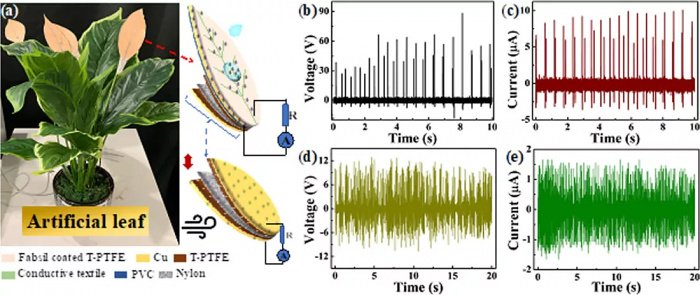Artificial plants will turn wind and rain into electricity
Researchers from the American Chemical Society have proposed the concept of an energy generator that can simultaneously harness the power of wind and rain. This reduces dependence on one element. The device has received the conventional name “artificial plant” for the leaf-shaped shape of the generator’s receiver and its obvious relation to “green technologies”.
The design consists of two parts on one base, which can flexibly sway in the wind and has a wide outer surface to catch raindrops. The lower part contains a wind generator consisting of several layers of Teflon, copper electrodes and nylon fibers. They expand and contract in the wind and rub against each other, allowing static electricity to build up.

The upper part is represented by an energy generator made of water droplets. The Teflon substrate here is covered with an electrically conductive fabric, and as the water droplets roll down the substrate, an electrical imbalance builds up and electrons are generated.
Both of these generators can operate in parallel – for example, during a thunderstorm. The wind generator produces 252 V under optimal conditions and the water generator 113 V for short periods of time.
In the current format, such a device is of no practical use, as its power generation is intermittent and unreliable. On the other hand, any new ideas for renewable energy will be increasingly in demand as available hydrocarbon sources are depleted.
You may be interested: Neuralink has implanted a chip into the human brain for the first time
